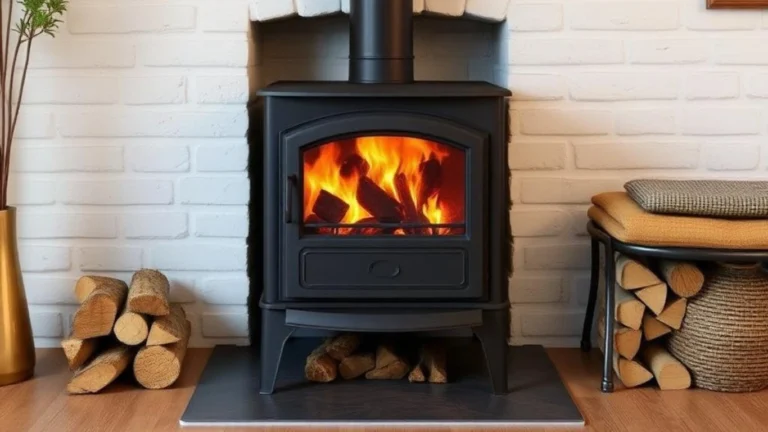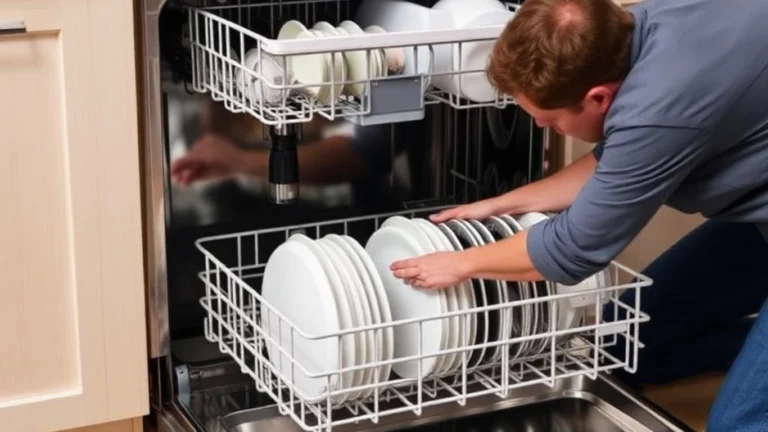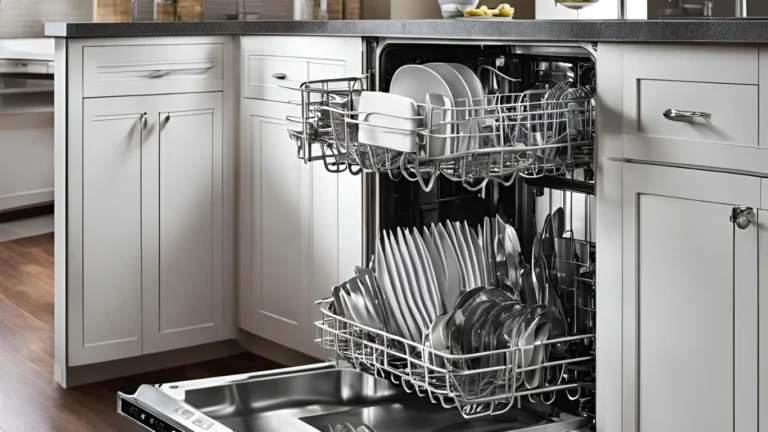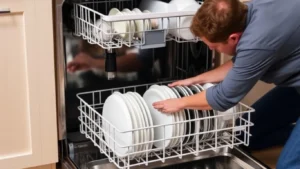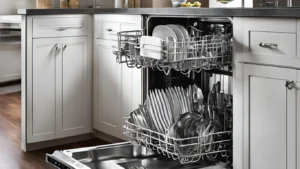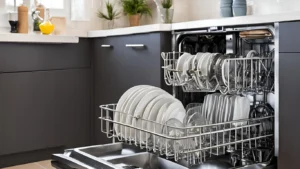Having a draining problem with your dishwasher can transform an appliance from an affordable asset to an expensive liability. Standing water in the dishwasher makes it impossible to use the appliance and can start to smell, leading to additional damages.
Surprisingly, many drainage issues can be solved without calling a professional. In the following sections, I describe the most common causes of drainage problems and provide step-by-step guides for restoring your dishwasher to its original state.
1. Most Common Reasons for Failing to Drain Dishwasher
When your dishwasher does not empty the water out, several different reasons could be causing the problem. Please find some of the most commonly observed reasons below:
1.1 Clogged Filter
The filter of a dishwasher is designed to capture food waste so that it does not reach the system drain. These filters can easily become blocked and hinder the flow of water which results in inadequate draining.
1.2 Blocked Drain Hose
The drain hose is the pipe that facilitates the movement of water from the dishwasher to the sink drain or garbage disposal. If the hose is kinked or clogged, water will not be able to leave the appliance.
1.3 Garbage Disposal Issues
If the disposal unit is clogged or incorrectly affixed, the dishwasher that is linked to the garbage disposal might encounter drainage issues. Another frequent blunder is neglecting to remove a knockout plug in a recently installed garbage disposal.
1.4 Blockage of the Air Gap
An air gap stops unclean water from flowing back into the dishwasher. If this gap is blocked, water will not move freely.
1.5 Broken Drain Pump
The drain pump removes water from the dishwasher. If the dishwasher is not draining, then the pump is most likely damaged.
1.6 Inappropriate Stacking
It is possible for water to gather if the dishwasher is overloaded or items are positioned in a way that block the spray arms.
1.7 Residual Detergent and Clogs
Over time, blockage may occur due to improper detergents containing too much detergent which leads to scum accumulation.
2. Correcting a Malfunctioning Dishwasher’s Drainage Issues: Comprehensive Guide
2.1 How to Clean the Filter
Before cleaning the filter, ensure that the appliance is turned off and the bottom rack removed. The filter is usually located at the bottom part of the appliance. Depending on your dishwasher, you can either turn the filter counterclockwise to remove it, or pull it upwards. Soak the filter in warm water while scrubbing it with a soft brush to get rid of any remaining gunk. A gentle scrub brush will aid in scrubbing any remaining stubborn dirt. Replace the filter properly.
2.2 Ensure the Drain Hose is Okay
The drain hose is located either behind the dishwasher or behind the kitchen sink. Look for noticeable bends, fissures, or obstructions that may prevent the flow of water. Pick the hose from the dishwasher and the sink joint with a set of pliers or a screwdriver. Pour warm water into the hose. If the hose is blocked, you may need to use a plumbing snake, but remember to use it carefully so as not to cause unnecessary damage. After unclogging the hose, replace it back but remember not to add bends on the hose.
2.3 Assess the Connection to the Garbage Disposal
Switch off power to the dishwasher alongside the garbage disposal. Assess the drain hole of the disposal for any potential clogging. If the dishwasher is new, ensure that the knockout plug in the garbage disposal drain hole has been removed.Use the disposal to get rid of leftover debris.
2.4 Clear the Air Gap
- Find the air gap located just above the sink faucet.
- Check the air gap opening for any visible caps and blockages.
- Use a bottle brush or pipe cleaner to unblock the gaps.
- Test the dishwasher after the air gap is unblocked.
2.5 Test the Drain Pump
- Dishwasher power must be turned off first.
- Remove the dishwasher’s kick plate before accessing the drain pump.
- Check whether the components of the pump along with the impeller are jammed or damaged.
- Consider changing the component if it’s damaged or if there is no action when powered on.
2.6 Adjust Loading Techniques
- Equipment overload must be avoided at all costs.
- Larger items such as pots and pans must be placed on the sides facing the rims of the double doors.
- Obstructed windows and doors area includes plates, cups, and utensils as well as working parts of the machine.
2.7 Use Proper Detergent and Maintenance Practices
- Only use soap that is safe for dishwashers. Avoid handwashing soap as it will create too many bubbles.
- Do not forget to wipe with a cleaning cloth once every thirty days after washing to help it clean better.
3. Preventative measures to avoid drainage problems.
Regular maintenance of the dishwasher can help avoid drainage problems in the future, including:
3.1 Set the Schedule
- Establish a filter, spray arms, and drill cleaning schedule.
- Use a moist cloth to cleanse the insides to eliminate soap scum and any oily remains.
3.2 Scrape Dishes Before Loading
Prior to dishwashing, ensure that dishes and utensils are free of large food residues.
3.3 Inspect Connections Periodically
- At least every few months, examine the connection between the drain hose and the garbage disposal.
- Promptly take care of any worn or damaged parts.
3.4 Run Hot Water
To increase drainage and cleaning effectiveness, turn on the kitchen faucet before dishwashing, enabling water to run hot.
3.5 Use Rinse Aid
A rinse aid allows water to flow more efficiently which, in turn, helps prevent residue buildups that may obstruct drainage.
4. When to Call a Professional
You should reach out to a professional if you’ve attempted all possible do-it-yourself remedies and the dishwasher is still failing to drain.
Recurrent problems signal:
- Issues with a failing motor or electrical components.
- Blockages within concealed parts of the dishwasher.
- Significant strain onto the drainage system.
The right experts can guarantee that your dishwasher functions effectively since they come equipped with the right tools and knowledge to handle complex issues.
5. FAQs About Dishwasher Not Draining
Q: Why is my dishwasher not draining?
This can be due to filters that are clogged, hoses that are obstructed, or drain pumps that are not functioning properly.
Q: How do I fix a dishwasher that won’t drain?
Initiate by cleaning any filters that may be dirty and checking the drain hose leading to the garbage disposal.
Q: Why isn't the water draining from my dishwasher?
This may be due to problems with the filter or hose.
Q: Why does my dishwasher not drain completely?
Improper loading or a partially clogged drainage system may cause incomplete drainage.
Q: What should I do if there’s no blockage but my dishwasher won’t drain?
If no visible blockage exists, the issue may lie with the drain pump or motor, which might need professional attention.


